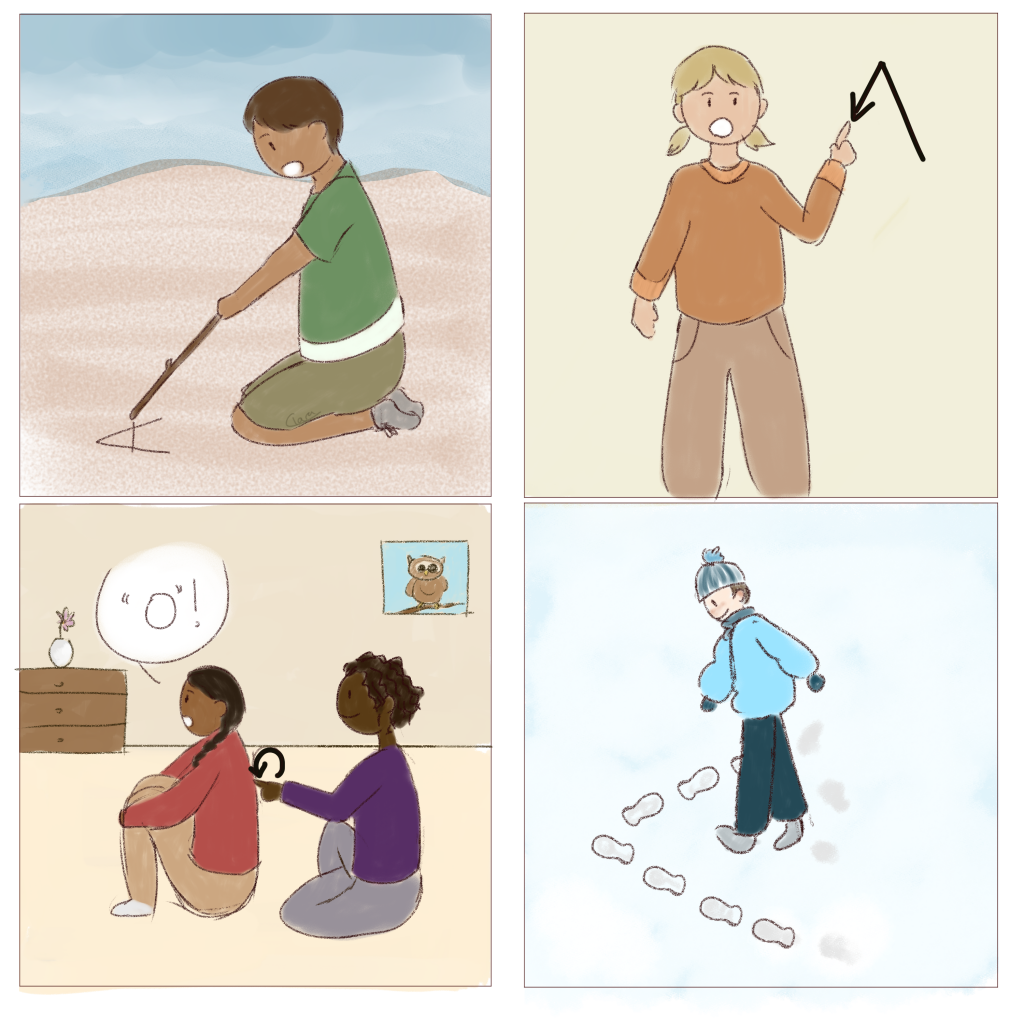Can reading be taught through movement?

As a child is making her first steps toward literacy, the focus is often placed on identifying letters or characters. Caregivers may point out a letter or character, and ask the child which it is. Though reading is largely a visual (or haptic, in the case of braille) process, interacting with letters or characters in different ways can help a child solidify her knowledge. Just think about how much easier it is to recognise a dog breed that you have played with in the park, than one you have just seen in pictures.
Learning how to write a letter or character is especially helpful for learning how to identify a letter! Children can trace letters with a pen on paper or even with their finger in the air. Very young children however do not have the elaborate fine motor skills, the precise muscle movements, necessary for pen and paper writing. One way to complement fine motor skill training is to use gross motor skills, large muscle movements, to write letters. They can use their whole arm to write large letters in the sand at the beach or they can use whole body movement to write letters with footprints in the snow. Gross motor skill writing activities can complement reading practice at any age, because they get kids up from long monotonous stretches of time sitting at desks and moving about! Practicing these kinds of movements actually helps a child learn to recognize letters or characters. So don’t be afraid to get your hands (or feet) dirty when teaching your child to read!
The scientific sources for our comic:
Longcamp, M., Zerbato-Poudou, M. T., & Velay, J. L. (2005). The influence of writing practice on letter recognition in preschool children: A comparison between handwriting and typing. Acta psychologica, 119(1), 67-79.
Longcamp, M., Anton, J. L., Roth, M., & Velay, J. L. (2003). Visual presentation of single letters activates a premotor area involved in writing. Neuroimage, 19(4), 1492-1500.
Guilbert, J., Alamargot, D., & Morin, M. F. (2019). Handwriting on a tablet screen: role of visual and proprioceptive feedback in the control of movement by children and adults. Human movement science, 65, 30-41.
In collaboration with Dr. Jessica Gilbert.
